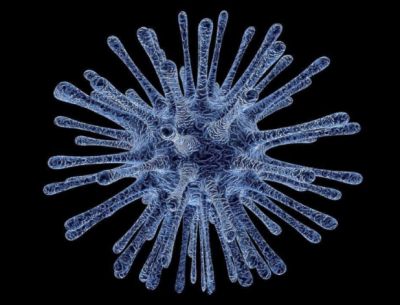5 Diseases You Can Suffer in an Unhealthy Environment
 The surroundings we live and thrive in constitute the environment. From the air quality that we inhale every day to the infrastructure of buildings we live in, all of these can significantly impact an individual’s health.
The surroundings we live and thrive in constitute the environment. From the air quality that we inhale every day to the infrastructure of buildings we live in, all of these can significantly impact an individual’s health.
In addition, these environmental risks and external factors have been continually evolving. Therefore, it’s not easy to anticipate the influence of such factors on the well-being of individuals.
Global warming and climatic variations have been a matter of extreme concern over the past few years. Due to these factors, there has been an increase in vector-borne transmission.
However, no matter how much we blame the atmospheric factors for the emergence of diseases. One cannot deny that humans are equally responsible. The unhealthy and detrimental practices in various sectors have been the leading cause of numerous contagious diseases.
Our continuous consumption and burning of fossil fuels increase the CO2 emissions in the environment. In addition, the growing carbon footprint causes the ozone layer to deplete, which in turn enhances the global warming effects.
Besides, anthropogenic activities are the primary cause of air and water pollution. The microbial decaying and the industrial processes generate a whopping amount of carbon monoxide, sulfur dioxide, and other harmful gases.
Furthermore, the use of pesticides, products containing toxic substances, and smoking practices affect environmental health. All of these activities prove the human contribution to altering the ecosystem. And this eventually leads to the exposure of many communicable infections.
The following is a list of parasitic and infectious diseases that occur mainly due to unhealthy environments:
1. Mesothelioma
It is a type of cancer in which the layer that covers the internal body organs gets affected. The predominant cause, but not the only one, of mesothelioma, is asbestos exposure.
Similarly, erionite can also cause mesothelioma. Additionally, the symptoms can also vary for each individual having a different type of mesothelioma. For instance, people with pleural mesothelioma may suffer from dry cough, chest pain, lack of appetite, and fever.
The signs of peritoneal mesothelioma are weight loss, constipation, shortness of breath, and abdominal pain. And people with pericardial mesothelioma might experience night sweats, weakness, fatigue, and blood clots.
Individuals that work on construction sites or are involved in the home improvement business are generally at high risk of asbestos exposure. Since the disease spreads aggressively, it is recommendable to consult a healthcare professional in the initial stage.
2. Pneumonia
Pneumonia is a transmissible disease that can switch from mild to severe if not treated timely. It is a lung infection in which the alveolus gets filled with fluid.
Due to this reason, an individual might face breathing problems. The major causes of this disease are germs in the atmosphere. These germs might be bacteria, fungus, or any other antigen. When an individual breathes in the same air in which the pneumonia patient has just sneezed or coughed, the infection transfers.
Although people of any age can be a target of pneumonia, however, older people and newborns can have pronounced effects of this disease.
The signs and symptoms include sweating, nausea, weakness, cough, and body ache. Antibiotics and medications work for the prevention of the disease. However, in a viral infection, a person should drink excessive fluids to beat the virus.
3. Malaria
Malaria is one of the significant public health problems caused in primarily tropical and subtropical countries.
The transmission of malaria occurs when an infected anopheles mosquito carrying plasmodium bites an individual. The presence of stagnant water inside the house and poor environmental hygiene are the primary causes of the breeding of these mosquitos.
Most people develop the symptoms when the parasite attacks the bloodstream and affects the red blood cells. Some signs of malaria might be high fever, chills, nausea, sweating, fatigue, headaches, muscle ache, diarrhea, and cough.
If not treated at precisely the right time, it can cause severe medical problems such as anemia, jaundice, seizures, or even death.
4. Trachoma
According to World Health Organization (WHO), trachoma has caused visual impairment or blindness in about 1.9 million people worldwide.
The bacterium Chlamydia Trachomatis is the main reason for this contagious disease. It spreads directly (human contact of eyes or nose with an infected person) or indirectly (towel, blanket, bedsheet, etc.).
The symptoms of trachoma usually start to appear in 12 days. Some common symptoms are itching and irritation of the eyes, eyelid swelling, eye discharge, eye redness, and light sensitivity.
To prevent this disease, ensure to dump away the animal and human waste and keep a fresh water hole for good hygiene practice.
Also, it is relevant to note that WHO has introduced SAFE (Surgery, Antibiotics, Facial cleanliness, Environmental improvement) strategy to control disease incidence rate.
5. Leishmaniasis
Leishmaniasis can occur when an infected sandfly bites a human being. These parasites are usually most active in tropical, subtropical, and southern European parts of the world. Other factors that lead to this disease include poverty, deforestation, and malnutrition.
There are three types of leishmaniasis; cutaneous, visceral, and mucocutaneous. The symptom for cutaneous include sores on the skin that may change in size and appearance with time.
However, infected people with visceral may suffer from weight loss, fever, spleen and liver swelling, and low blood counts. However, the symptoms for mucocutaneous may occur years after cutaneous sores. They may include a stuffy nose, nose bleeding, or difficulty in breathing.
Final Words
Public health workers have been continually working to spread awareness about a healthy, clean, and green environment. If you happen to be suffering from any of the above illnesses then you may want to look at a Ndis Service Provider In Sydney, Care For Family program, or a care program elsewhere, to help you out.
Through educational campaigns and activities, these professionals consistently emphasize the influence of environmental hazards on human health and the quality of life.
And while these workers are on the frontlines to reduce the preponderance rate of diseases. However, it is equally important, if not more, for individuals to play their part and take appropriate measures to restrict the exposure of external toxins.
It is next to impossible to wipe out environmental diseases completely, considering the growing prevalence of chemicals and genetic propensity. Still, society, as a whole, should support regulatory programs and policies to make this world a better and safe place to live.






